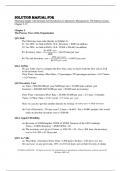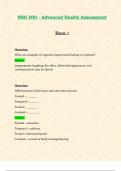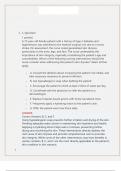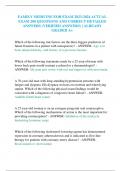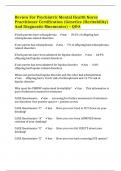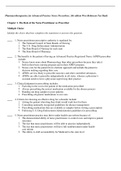Tentamen (uitwerkingen)
Solution Manual for Matching Supply with Demand An Introduction to Operations Management, 5th Edition Cachon. All Chapters A+
- Vak
- Instelling
Solution Manual for Matching Supply with Demand An Introduction to Operations Management, 5th Edition Cachon. All Chapters A+ The Process View of the Organization Q2.1 Dell The following steps refer directly to Exhibit 2.1. #1: For 2001, we find in Dell’s 10-k: Inventory = $400 (in million) #2: F...
[Meer zien]
